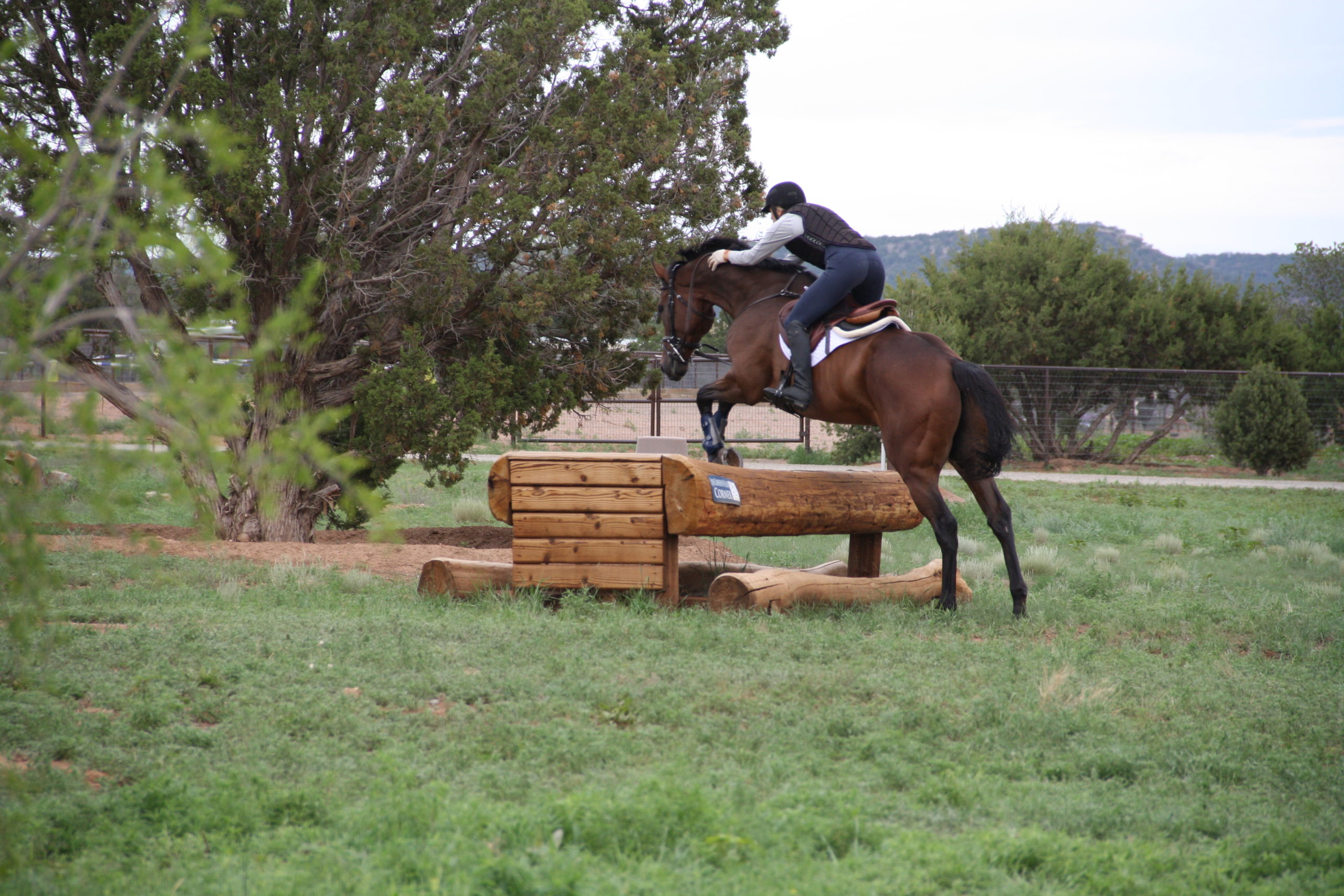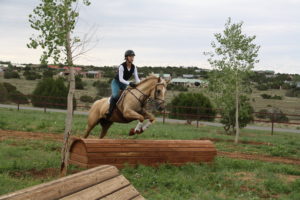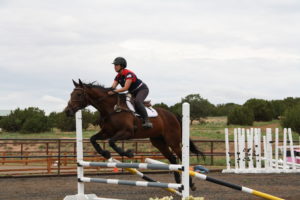
07 Aug 2021 Santa Fe attracts top jumping clinicians and competitors
In line with my effort to learn more about the wider equestrian community of New Mexico, I ventured out to a cross-country and stadium jumping clinic at the Terra Nova Equestrian Center last weekend. The clinic with an internationally recognized trainer, rider, and medalist, Robin Ashker, not only reminded me why I like to be closer to the ground as a rider but why I still live in awe of high jumping equestrians.
 Courageous or just plain crazy, the riders I photographed last weekend demonstrated their skill both in the saddle and with their horse. While some elements of jumping focus on the form of the horse and rider over fences, cross-country and stadium jumping is a flat-out effort to hurtle through a course without refusals, pole knock-downs, or falls of either party.
Courageous or just plain crazy, the riders I photographed last weekend demonstrated their skill both in the saddle and with their horse. While some elements of jumping focus on the form of the horse and rider over fences, cross-country and stadium jumping is a flat-out effort to hurtle through a course without refusals, pole knock-downs, or falls of either party.
Robin Ashker reached the five-star level of eventing with four horses, three of which were off-the-track Thoroughbreds. As a Junior Olympian, Ashker earned two team bronze medals and one individual silver. Seven years ago, Ashker turned professional in dressage while continuing to maintain her eventing career. Ashker trains horses from the start to the top levels of eventing and dressage at Keystone Acres in Chesterfield, Virginia.
Riders in the Ashker clinic absorbed complicated and challenging courses on the cross-country track and the four-foot plus jump course. A water and bank jump required navigation going both uphill and down. Hurtling around the grounds, riders flew over fences with grit. Jumps colorfully painted and solid fences challenged perceptions of both horses and riders. Sharp turns in the field, and the arena with varying heights was not for the weak of heart!
When I was much younger than I am now, I competed in hunter over fences and hunt seat equitation over fences classes and briefly harbored fantasies of cross-country jumping, especially after the movie International Velvet was released. No such option existed for me on the South Dakota prairie, however. I found myself feeling wistful watching the young women sailing over fences taller than my own horse and wondered what their dreams of competition look like thirty years after mine.
Of course, safety guidelines and requirements have changed dramatically over the past three decades. The sophistication of helmet design puts my velvet-covered, chin strap riding hat to shame. Vests that inflate upon the impact of a rider’s fall didn’t exist in my midwestern world. Time passage provided innovation and a commitment to the safety of both the horse and rider, for which we are all grateful and makes me wonder how safety requirements for equestrians will continue to improve.
wonder how safety requirements for equestrians will continue to improve.
In a period of four hours, I shot nearly five hundred photos. Only a few are posted in this blog, but I plan to work with my website guru to add a page about this clinic in the photo gallery on this website. In the interim, if you were a clinic rider and would like photos of you and your horse, please email me at .
I tried to land at least one good photo of each rider during the Saturday morning sessions.
Between the Olympics and the clinic last weekend though, I’ve decided to keep both my feet and my horse’s hooves on the ground!
Stay safe, and stay horsey!
Anna

